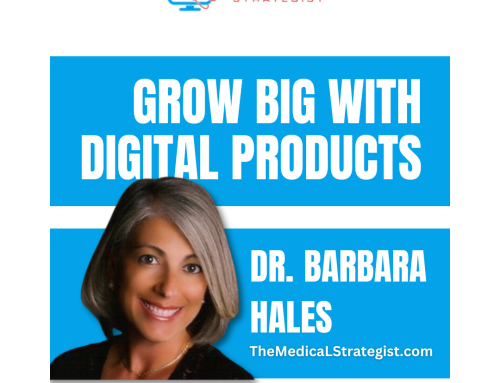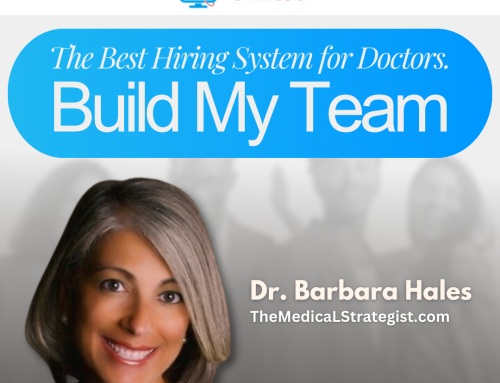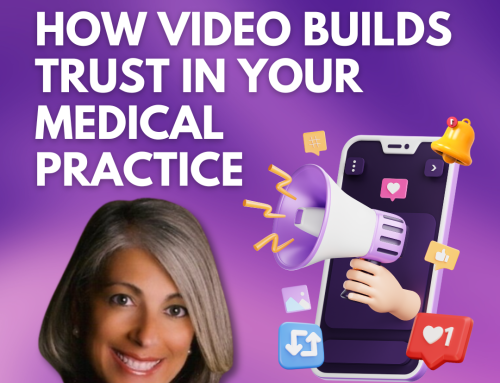Podcast: Play in new window | Download
Subscribe: RSS
In this episode, Barbara discusses:
- The buy-one-give-one model of business giving.
- Evolving your business to make a positive impact on communities in need.
- Knowing why you are giving to a good cause.
Key Takeaways:
- Dozens of companies out there found a way to do a buy one give one model that fits well with their business and their brand.
- Knowing that you are getting a good product and giving to a good cause often draws people to spend their money at businesses that also serve those in need.
- Get creative with what you can do to give back to your community and those in need.
“What could you donate? What product or services do you provide to your consumers that you could, then, donate something in exchange?.” — Barbara Hales, M.D.
TRANSCRIPTION
Welcome to another episode of Marketing Tips for Doctors. I’m your host, Dr. Barbara Hales.
Today, we have an interesting topic to discuss and that is one of the charitable donations to help others in these challenging times while making consumers of your services feel better about themselves rather than using competitors instead. This is especially true as we’re approaching the holiday season as well.
Toms Shoes
Giving patients the opportunity to use your services or buy your products in much the same way as the following companies that have instituted a “buy one, give one” model of business which was started by Toms Shoes is an attractive one. Many companies are now using Toms’ “buy one give one” model. Check these out for instance.
Bombas
Bombas. They sell socks for men, women, and kids. For every pair of socks that you buy from them, they donate a pair of socks to needy people around the world. Their merino wool socks with honeycomb arch support is a personal favorite.
Roma sells boots for women and children. Want to try on your footwear before giving poverty the boot? Roma’s boots are sold at hundreds of retailers throughout the country.
Then there’s Better World Books. They sell new and used books. They’ve raised more than $18 million for global literacy and local libraries. They’ve also diverted more than 73,000 tons of books from landfills.
Kutoa
Ever heard of Kutoa, K-U-T-O-A? They sell health bars. Flavors include blueberry, almond, chocolate banana, and peanut butter and jelly. Who wouldn’t love these? Through their brand, their company spreads healthy living and helps fund programs to feed children around the world.
Then there’s FIGS, F-I-G-S. They sell medical scrubs but they also have a line of casual clothing for both men and women. Their fleeces are quite handsome. To date, they’ve donated nearly 100,000 sets of medical scrubs to developing countries. During this COVID pandemic, this is especially needed and also wanted and something that is eagerly accepted.
Warby Parker
Now, I’d like to talk about my personal favorite which is Warby Parker. They sell eyeglasses and sunglasses. While they have more than 40 brick and mortar stores around the country, it really started with online production. Alleviating the problem of impaired vision is at the heart of what they do. And the price of the eyeglasses that they sell is extremely competitive more so than the glasses that you would try to purchase in the average eyeglass store.
Not only that, but you can virtually try on all of the pairs of glasses that they sell by downloading a picture of your face and then virtually trying the glasses on. Then you could just order it online based on what you see. But they have been distributing their “buy a pair, give a pair” to needy people throughout the world. At the moment though, the majority of glasses distribution has been suspended due to COVID-19. Instead, although they continue to support the distribution of glasses where they can do so without compromising the health of the community, they’ve temporarily shifted their efforts to prioritize public health and safety.
As of April 1st of this year for the majority of Warby Parker glasses purchased, personal protective equipment, PPE, and preventative health supplies are being distributed to healthcare workers and communities in need.
They started Warby Parker by reimagining everything that a company and industry can be, impacting the world in a meaningful way. In response to COVID-19, they’ve needed to evolve every aspect of their business including figuring out new ways to make a positive impact on communities in need. With their “buy one, donate one” program, a pair of PPE is donated to various health communities. VisionSpring, their company protects healthcare workers and slow COVID-19 transmission in high-risk communities where they work, principally in India, Bangladesh, and Sub-Saharan Africa although other places are reaping the benefits as well.
As of April 1, 2020, for the majority of Warby Parker glasses purchased, their PPE or personal protective equipment has been distributed all over. VisionSpring is leveraging their supply chain, community mobilizers and network of hospitals and clinics to provide frontline health workers with protective goggles, face shields, surgical and respiratory masks, medical gowns, and more.
In addition, community health workers and rural pharmacists are receiving washable cloth masks. With their funding, VisionSpring is setting up handwashing stations and distributing hygiene kits for households. They estimate that this COVID-19 response plan will directly serve over 500,000 people through the end of 2020.
Well, I can honestly tell you that I have purchased several pairs of glasses. I could have gone to the typical optical store that I’ve been to before. But knowing that I am donating to such a good cause and getting attractive glasses at the same time really makes it a no-brainer for me.
We could never have imagined these extraordinary circumstances and the effects that their “buy a pair, give a pair” partners and participants would have. But I am happy to buy glasses knowing that in these uncertain times that I am helping others while purchasing these spectacles. And I’ve actually gotten a lot of compliments about the glasses when I wear them as well.
So now, I have given you examples of several companies although there are many more out there. The question that I have for you is: What could you donate? What products or services do you provide to your consumers that you could then donate something in exchange? Is it other services to your community for people in need or to hospitals and clinics? Or is it products that you sell to prospective patients and patients that you have that you could donate?
Are there kinds of toothpaste or massage appliances or ointments that you would recommend for your patients that you could then give to others in communities during these health challenges that are sorely wanted?
And in addition to that, it gives you the opportunity to spread your message and increase your visibility. Just think of the press releases that would come out and the public opinion about you by doing this.
Now, I’m not saying that you should do this solely for getting more well known. But then again, are these companies doing it solely for good causes, or is a certain percentage of it being done to get their name out? By giving a product for every product they sell, are they then encouraging people to purchase their products just as you would be encouraging prospective patients to use your services?
Think about it. What is it that you could donate? Could you set up a “buy one, get one” or a “use one, give one” program? What is it that you would give away? Think about that for a while. Also, if you have an answer, feel free to comment on it in the comment box below.
Well, this has been another episode of Marketing Tips for Doctors with your host, Dr. Barbara Hales. Until next time.
Connect with Barbara Hales:
Twitter: @DrBarbaraHales
Facebook: facebook.com/theMedicalStrategist
Business website:www.TheMedicalStrategist.com
Show website: www.MarketingTipsForDoctors.com
Email: Barbara@TheMedicalStrategist.com
Books:
YouTube: TheMedicalStrategist
LinkedIn: www.linkedin.com/in/barbarahales



